
Petrus Marius Molijn (9 July 1819, Rotterdam - 28 April 1849, Antwerp) was a Dutch painter. Much of his career was spent in Antwerp, which had become part of Belgium by the time of his death.

Petrus Marius Molijn (9 July 1819, Rotterdam - 28 April 1849, Antwerp) was a Dutch painter. Much of his career was spent in Antwerp, which had become part of Belgium by the time of his death.
He began his artistic studies at the Royal Academy of Fine Arts (Antwerp), where he was taught by Ferdinand De Braekeleer, Jan Hendrik van Grootvelt and Henri Leys.
His work encompasses several genres, including landscapes, interiors, and still-lifes. He also worked as an etcher and lithographer. In 1845, he was named a member of the Koninklijke Akademie van Beeldende Kunsten (predecessor to the Rijksakademie) in Amsterdam.
He died in 1849, of unspecified causes, aged only twenty-nine. A small monument to him has been erected in Antwerp.
![]() Media related to Petrus Marius Molijn at Wikimedia Commons
Media related to Petrus Marius Molijn at Wikimedia Commons
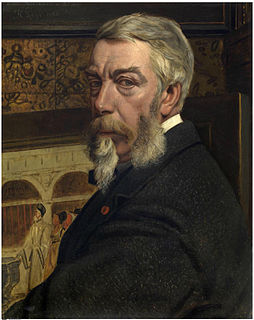
Henri Leys, Hendrik Leys or Jan August Hendrik, Baron Leys was a Belgian painter and printmaker. He was a leading representative of the historical or Romantic school in Belgian art and became a pioneer of the Realist movement in Belgium. His history and genre paintings and portraits earned him a European-wide reputation and his style was influential on artists in and outside Belgium.
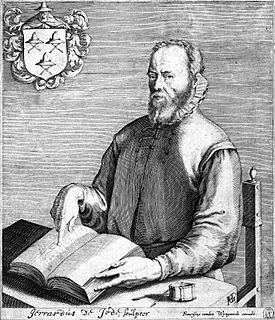
Gerard de Jode was a Netherlandish cartographer, engraver, and publisher who lived and worked in Antwerp.

Petrus Josephus Hubertus "Pierre" Cuypers was a Dutch architect. His name is most frequently associated with the Amsterdam Central Station (1881–1889) and the Rijksmuseum (1876–1885), both in Amsterdam. More representative for his oeuvre, however, are numerous churches, of which he designed more than 100. Moreover, he restored many monuments.

Petrus Christus was an Early Netherlandish painter active in Bruges from 1444, where, along with Hans Memling, he became the leading painter after the death of Jan van Eyck. He was influenced by van Eyck and Rogier van der Weyden and is noted for his innovations with linear perspective and a meticulous technique which seems derived from miniatures and manuscript illumination. Today, some 30 works are confidently attributed to him. The best known include the Portrait of a Carthusian (1446) and Portrait of a Young Girl ; both are highly innovative in the presentation of the figure against detailed, rather than flat, backgrounds.
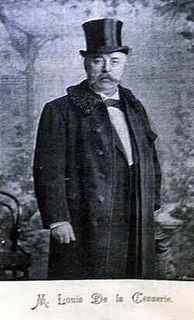
Louis Delacenserie (1838–1909) was a Belgian architect from Bruges. The spelling of his name differs greatly; De la Censerie, Delasencerie, Dela Censerie or Dela Sencerie are the most common alternative forms. His father was a merchant and building contractor from Tournai.

Jan Theodoor van Rijswijck was a Flemish writer. He was an uncle of the politician Jan Van Rijswijck.

Peeter van der Phaliesen, Latinised as Petrus Phalesius, French versions of name Pierre Phalèse and Pierre de Phaleys was a Flemish bookseller, printer and publisher. Aside from a number of literary and scientific works, his printing press is mainly known for its publications of music. Phalesius was the principal publisher of music active in the sixteenth-century Low Countries.
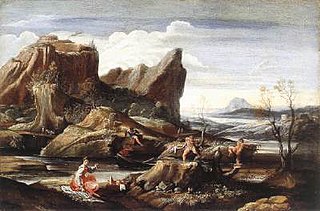
Pieter de Molijn was a Dutch Golden Age painter and engraver born in England.

Petrus Johannes van Regemorter was a Flemish landscape and genre painter, born in Antwerp. He was a pupil of the Academy of that city, but he owed much to his study of the pictures in some private collections. He became a professor in the Academy, and Dean in the Painters' Guild in 1786. Many artists of note studied under him, and he had a large practice as a picture-restorer. In 1814 he was engaged in bringing back the pictures taken by the French to Paris. He died in 1830. In the Antwerp Museum is a Shepherd and Flock by him. He excelled in painting moonlights.

Het Gulden Cabinet vande Edel Vry Schilder-Const or The Golden Cabinet of the Noble Liberal Art of Painting is a book by the 17th-century Flemish notary and rederijker Cornelis de Bie published in Antwerp. Written in the Dutch language, it contains artist biographies and panegyrics with engraved portraits of 16th- and 17th-century artists, predominantly from the Southern Netherlands. The work is a very important source of information on the artists it describes. It formed the principal source of information for later art historians such as Arnold Houbraken and Jacob Campo Weyerman. It was published in 1662, although the work also mentions 1661 as date of publication.

Petrus, or Pieter de Jode I or Pieter de Jode the Elder, was a Flemish printmaker, draughtsman, publisher and painter active principally active in Antwerp. He was active as a reproductive artist who created many prints after the works of leading painters and was in addition a prolific designer of prints for Antwerp publishers.

Ferdinand de Braekeleer, sometimes spelled as Ferdinand de Braeckeleer, was a Flemish painter. He is known for his historical paintings and is called 'the Elder' to distinguish him from his son with the same name, who was also a painter.

Nicolaas van Eyck or Nicolaes van Eyck, was a Flemish painter active in Antwerp in the middle of the 17th century. He is known for his equestrian and battle scenes, landscapes and portraits. He also painted a few civil processions, including parades of the Antwerp civil militia.
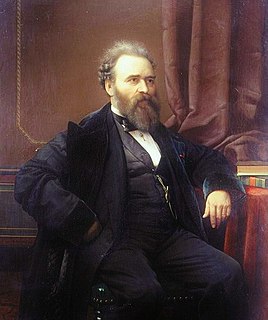
Petrus Van Schendel (1806-1870) was a Dutch-Belgian genre painter in the Romantic style who specialized in nighttime scenes, lit by lamps or candles. This led to him being known as "Monsieur Chandelle".

Pieter Meulener or Peter Meulenaer, Antwerp), was one of the leading Flemish painters of battle scenes in the mid-17th century. He also painted landscapes with genre scenes.

Pieter van der Heyden was a Flemish printmaker who is known for his reproductive engravings after works by leading Flemish painters and designers of the 16th century.
Petrus Opmeer (1526–1594) was a Dutch Catholic historian and controversialist. According to his biographer Valerius Andreas, Opmeer was a friend of "painters, sculptors and architects", including Maarten van Heemskerck, Pieter Aertsen, Willem Danielsz van Tetrode, Frans Floris, Antonis Mor and Philip Galle.

Jean Pierre François Lamorinière, Jan Pieter Frans Lamorinière or François Lamorinière was a Belgian landscape painter best known for his realistic depictions of landscapes in his home country. His work is situated between the previous generation of the Romantic landscape painters and the Realist landscape.